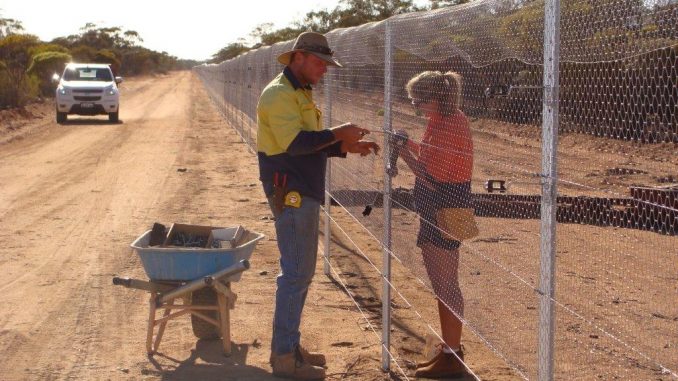
It may surprise you to discover who some of the culprits responsible for central Australia’s off-the-charts mammalian extinction rate are. Our feline friends are having a very large detrimental impact on our native animal species. There is a massive population of feral cats – estimated to be in millions – in central Australia and they are preying relentlessly on our small animals and birds. In direct response to this, the world’s largest fence is being constructed here to protect endangered species from their clutches – or rather, claws.
Cats are obligate carnivores, or in other words, strictly carnivorous. The feral cats need to prey on the animals and birds for survival, but unfortunately they have quite an appetite for the act of hunting itself, and kill unnecessarily frequently. After extensive research into this subject, Professor John Woinarski from Charles Darwin University places the total bird population killed by feral cats at approximately 320 million and the total bird population killed by pet cats at about 60 million. His research has indicated that cats alone are “largely responsible for the extinction of about 20 mammalian species” in Australia. All of this has played a role in the degradation of our wildlife, and has culminated in central Australia currently having the worst mammalian extinction rate in the world.
Ian Darbyshire, the CEO of the Foundation for National Parks and Wildlife, put things clearly into perspective when he reported that “At least 30 native mammals have become extinct since European settlement – 14 in just the past 50 years.” This, Atticus Fleming from the Australian Wildlife Conservancy emphasises, is apart from the “ten other threatened mammals”.
The dire need for action is further demonstrated by comparing Australia with USA, which has only lost one mammalian species to extinction since its European settlement.
However, the Australian Wildlife Conservancy has been given control of Newhaven Station by Birds Australia so that they can put their strategy to conserve our wildlife species into effect. In the distant past, Newhaven Station was cattle property, but it has not been used for that purpose for more than ten years. It will now become the stage for the world’s largest cat fence, which will enable the creation of a cat-free zone. Newhaven Station is ideally suited for this project as it is located at the tip of the Great Sandy Desert, which is one of the areas that suffers the most significant losses due to feral cats.
Similar plans have been very effectively implemented, albeit on a smaller scale, in other places around Australia. However, due to its sheer magnitude, this particular fence will be a landmark for conservation infrastructure.
The goal is for it to cover more than 185 kilometres of land, thus protecting 70, 000 hectares from feral cats. Naturally, for it to serve its purpose, foxes and feral cats will have to be captured and removed from the fenced-off area.
In order to achieve this, the team at Newhaven is working closely with local indigenous rangers. Their familiarity with the area and understanding of the local wildlife habits is proving to be invaluable. If all goes well, all cats will have been banished from Newhaven Station by December 2018. As another precaution for the protection of the wildlife, fire management in this area is being increased.
When it is safe, eleven vulnerable species, including the mala (rufus hare-wallaby) species, will be introduced into this region and we can then look forward to watching them flourish. Mr. Fleming, for one, vouches for the likelihood of the project’s success. He says, “If you get people on the ground, if you get the science right, and the feral animal control right you can actually turn back the tide of extinctions in Australia.”